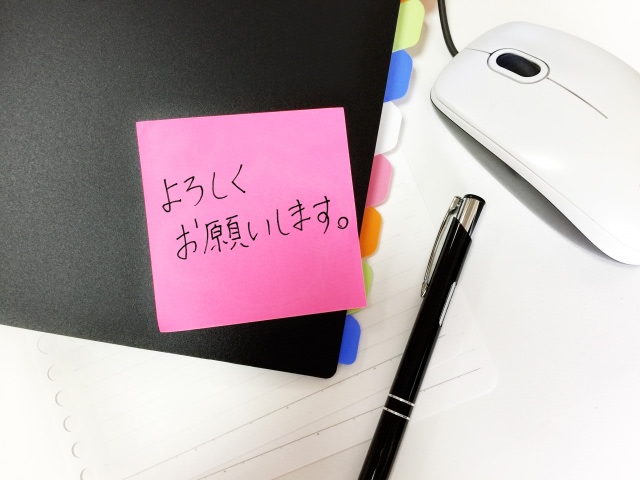Updated September 26, 2024
Business Japanese: The Ultimate Guide [2024]
In this article: 📝
When searching for a job in Japan, being able to speak "business Japanese" can give you a considerable advantage. But what is business Japanese and how is it different from casual and polite Japanese?
In English, there are polite words and ways of saying things when speaking to coworkers, customers, or business partners. You might use it on the phone or in an email. You don’t use slang or vulgar words, and you phrase things in a certain way to avoid conflicts.
In the same way, business Japanese is a set of polite phrases and words for items and actions. It is inseparable from Japanese workplace culture and social structure. Learning can feel at first like restarting your Japanese language study from scratch!
Now, you don’t always need to know Japanese to work in Japan, which we talk about in this article. In fact, Japan Dev carefully curates jobs that don’t require Japanese proficiency. But putting in the effort to learn how to speak Japanese in a professional setting will not only increase the number of jobs you are eligible for, but also show your commitment to understanding workplace culture.
So what are examples of business Japanese and how can you learn it? I’ll go over some basic concepts, tips, and methods for learning. This guide assumes that you have basic proficiency in Japanese to build on.
This isn’t an exhaustive guide, and as usual the experiences are just my personal ones! But I hope this can be a starting point for your journey.
1. Basic concepts
Before we get into the details of vocabulary and how to learn or improve your business Japanese, let’s go over the social concepts that business Japanese is based on.
1.1 Social distance
No, not the infection prevention measure during the pandemic…!
I go into greater detail in my article about senpai and kohai relationships in Japan, but social hierarchy in Japan is vertical and strict. Your elders, boss, manager, senior coworkers and other people of higher status are “above” you.
The vertical distance means two things: 1) The further someone is on the social ladder above you, the more politely you need to speak to them, and 2) when you speak to someone in polite language, you are trying to “raise them up” while positioning yourself “lower.”
For example, when you are exchanging business cards, you usually want to hold yours lower. You might also see coworkers battle to see who can hold their drink the lowest during a toast at an office party until they all end up squatting on the floor.
When you speak in polite Japanese, you are trying to create social distance. Besides some physical gestures here and there, you mainly accomplish this through what words you use.
1.2 Uchi and soto
The most fundamental concept in polite Japanese, both on and off the clock, is the relationship between uchi “inside” (内) and soto “outside” (外). This plays a key role in Honne and Tatemae, and helps you understand the nuances of Japanese communication.
Uchi is your group, whether it be your coworkers or your company in general. If there are multiple companies working together on a single project and there is a mutual client, then sometimes they will become your uchi as well.
Soto, on the other hand, is the “other” in the interaction. They could be a client or an outsourcing company, anyone you are doing business with (generally called a torihikisaki; 取引先).
Communication with soto groups is when you have to pay the most attention to your polite business Japanese. There are special words used to refer to the actions of other people and your own based on both social ranking and uchi and soto to create social distance.
Over long projects, people from other companies can sometimes become your uchi. (If there is no hierarchical relationship like outsourcing.) I had a manager from another company call me each morning the week before a big event so we could complain!
1.3 Sonkeigo and kenjougo
Sonkeigo (尊敬語) and kenjougo (謙譲語) are two systems of speaking to people of higher social rank and/or soto people in formal situations. Together they are referred to as keigo (敬語) – “polite language.”
Sonkei means respect or reverence. When you talk about the actions of someone not in your uchi, like a client, you use sonkeigo. (Go means language!) This “raises” the person you are speaking to.
Kenjou, on the other hand, means modesty or humility. You use this style of speaking when talking about your actions or the actions of those in your uchi. This “lowers” yourself.
Depending on the formality of your company, you may have to use keigo when you speak to senpai and managers. But never talk about a boss or senpai in sonkeigo to a business partner!
Even if they are your boss or a senior coworker, you still need to use kenjougo when referring to them in communications with people outside of the company! (It goes without saying, but don’t use it to refer to yourself either.)
Keigo is used heavily in some college clubs and sports teams too, so some fresh grads will be more or less familiar with the system. But many new hires have to learn too.
I have been told a few times that since learners of Japanese practice keigo in a classroom instead of learning it by fire in clubs or when they join a company, they can be better at using it than their Japanese peers!
I have even had the experience of watching a Japanese coworker completely fumble keigo with a client on a few occasions. Knowing when to use what is half the battle. So where do you start? Let’s look at some words and phrases.

2. Keigo: A (very) basic guide
2.1 “Beautification” - o and go
Maybe you have heard someone refer to chopsticks as o-hashi (お箸) instead of just hashi (箸). Maybe instead of a question shitsumon (質問), someone says go-shitsumon (ご質問). This is one way to talk about things more politely.
O and go are actually the same kanji character – 御. The pronunciation is a little complicated. It depends on the word that comes after it. O is usually for “native” words like hashi and “tea” cha (茶), and words from simple verbs like drink, nomimono (飲み物).
Go is for two-kanji “Chinese-origin words” like “eating and drinking” inshoku (飲食) and shitsumon (質問). But there is a catch: Words that have ji/koto (事) on the end use o. So a meal is o-shokuji (お食事).
I actually wrote “reply” as go-henji (ご返事) for a long time in emails until I happened upon an article by the NHK Broadcasting Culture Research Center. While people do use go-henji, using o is actually the correct way.
Borrowed words don’t get o or go! You don’t call coffee okoohii (おコーヒー)! A quick rule of thumb is that words written in katakana do not get the fancy treatment.
2.2 San and sama
These are keigo terms attached to names when you address someone. Tanaka-san, Yamada-san, Sato-san… You should always refer to your coworkers, or anyone really, with -san (さん). You can even add it to company names when speaking internally.
Sama (様) is lifting someone in your soto to a higher level. You should always address people in emails or snail mail as sama.
However, referring to your coworkers in conversations with other companies is tricker. You actually drop -san all together. Just be very mindful of how far your “in-group” extends!
In my previous place of employment, we used -sama internally for addressing emails. I was only vaguely aware that this wasn’t “normal” before I changed jobs. It was a hard habit to break at first.
I also made the mistake at my previous job of dropping -san in an internal email with someone in a different department. We use -sama with everyone, I thought. We are a big company! Unfortunately, the person was cc'd on the email and I got severely chewed out.
If you are directly addressing a coworker in conversation in front of a client, please use -san. If you are talking about someone to a business partner, drop it!
Hard mode
When you address companies, departments, or organizations, you don’t use sama. The correct form of address for organizations is onchuu (御中). This is particularly important for things like letters, estimates, reports, and invoices.
2.3 Ki, on, and hei
Ki (貴), on (御), and hei (弊) are prefixes for talking about companies, schools, and other organizations. You might recognize 御 from the o and go in 2.1 and in onchuu in the previous section.
Ki and on are sonkeigo. When talking about a client or a business partner company, use kisha (貴社) or onsha (御社). Technically, kisha is for formal writing, including emails, and onsha for speaking, like in interviews or meetings. However, in practice, many people use onsha in emails too.
When you are talking about your own company to people in your soto, use heisha (弊社). Additionally, you can use tousha (当社) to talk about your own company internally. While heisha is keijougo, tousha is regular polite language.
If you are talking about another company internally, you can say senpou 先方 or the company name +san. (You can also use sama externally to be specific about whom you are speaking about.) The opposite of senpou is touhou (当方).
Hard mode
You can use these terms for schools (貴校), banks (貴行), hospitals (貴院), newspapers or letters (貴紙), magazines (貴誌), organizations (貴法人)... The list goes on. You can also use on- when speaking, and hei- and tou- can be used the same way.
2.4 Verbs
The most prominent element of keigo are verbs – how you talk about the actions of yourself, your coworkers, and business partners.
When I first learned about keigo, it felt like I was relearning Japanese. The verbs didn’t even sound the same! My first reaction was…despair! But there is hope: The amount of irregular verbs is limited. You can memorize those and then follow a pattern for other verbs.
The patterns are o + verb + ni naru for sonkeigo and o + verb + suru/shimasu for kenjougo. If you are sending documents over to a client (okuru; 送る), you o-okuri-shimasu (お送りします).
When asking a client if they read something it would be o-yomi-ni-narimashita ka? (お読みになりましたか) If you want to know if they have heard something, you can ask o-kiki-ni-narimashita ka? (お聞きになりましたか) Yes, “o” is 御, if you are curious!
Keep in mind that two-character verbs often have go at the beginning instead of o. For example, riyou suru “use” becomes go-riyou-ni-naru (ご利用になる). The same rule as the words above holds here too.
Here is a basic list of common verbs in plain form. Remember to use them in polite form when you speak! (Gozaru and irassharu turn into gozaimasu and irasshaimasu.)
|
English |
Plain |
Sonkeigo |
Kenjougo |
|---|---|---|---|
is |
だ、である |
でしょう、ござる |
ござる |
is (exists/has) |
ある |
ござる |
ござる |
is (being) |
いる |
いらっしゃる |
おる |
do |
する |
なる |
いたす/する |
see/watch |
見る |
ご覧になる |
拝見する |
listen |
聴く |
お聴きになる |
拝聴する |
ask |
聞く |
お聞きになる |
伺う/お聞きする |
know |
知る |
ご存じだ |
存じる、存じ上げる |
say |
言う |
おっしゃる |
申す、申し上げる |
talk |
話す |
お話になる |
お話しする |
read |
読む |
お読みになる |
拝読する、お読みする |
write |
書く |
お書きになる |
お書きする |
eat/drink |
食べる/飲む |
召し上がる |
いただく |
meet |
会う |
お目にかかれる |
お会いする |
receive/accept |
受ける |
お受けになる |
拝受する/お受けする |
go |
行く |
いらっしゃる |
伺う |
come |
来る |
いらっしゃる/お越しになる |
参る |
This isn’t an exhaustive list, of course, but this is just to get you started. Sometimes you have to grit your teeth and memorize. This is one of those times.
Hard mode
1) 聞く isn’t just listen! When asking for specific, concrete information, use o-tazune-suru お尋ねする. When you want to ask for the opinion or impressions, or wishes or requests, use お聞きする. 聴く is actually the more proper verb for the act of listening, while 訊く is an unusual but more specific verb for asking. They are all kiku, though!
2) The kenjougo form of to do (する) is いたす, but it can’t be used interchangeably for suru in o-verb-suru. You can’t o-kiki-itashimasu. In the same way, 拝見いたします is used frequently to be extra extra polite, but is technically not correct.
You can add desho for an extra touch though. “Have you heard?” お聞きになりましたでしょうか?
Hack: 聞かれましたか? You can also use the passive form for sonkeigo. Psyche! You can’t say お聴きにされましたか, though. That’s also double.
3) If a client cames/came to visit your company, you can say o-koshi-ni-naru, but also go-sokurou itadaku (お足労いただく). It literally means to receive “foot labor.”
2.5 Itadaku and kudasaru
Before a meal, you say itadakimasu and when you are asking for something, you say kudasai. But these two words are also some of the most useful that you will find along your keigo-learning journey.
Itadaku has several meanings, but is mainly the kenjougo form of morau 貰う, to receive. You also “receive” food, so it also means to (humbly) eat and drink. You can also use it to ask someone to do you a favor, just like morau.
Everything you ask someone to do for you, you should use itadaku.
Can you check this for me?
Kakunin-shite-itadakemasu-ka? (確認していただけますか)
Or even better:
go-kakunin-itadakemasu-ka? (ご確認いただけますか?)
You can also use it to mean them graciously letting you do something. Need a moment to check back with a coworker before you answer?
I will check that for you
kakunin sasete itadakimasu (確認させていただきます)
It is similar in meaning to kakunin itashimasu (確認いたします), but is even more humble. It has the nuance of checking because they graciously allow you to.
Kudasaru is the sonkeigo form of kureru, which describes someone of higher standing giving you something. It is mainly used in polite requests: kakunin-shite-kudasai (確認してください). If you want to bump it up from polite to keigo, use go-kakunin-kudasai (ご確認ください).
There is also go-kakunin-sasete-kudasai (ご確認させてください). It has a similar meaning as itasu and saseteitadaku but it is a request: “Please let me check that for you.”
When you want to ask about the opinions or impressions of your coworkers or business partners about a certain topic, this is a great way to phrase it:
Please let me hear your opinion (Please tell me what you think)
go-iken wo kikase-kudasai (ご意見をお聞かせください)
Please let me hear your impressions (Please tell me what you think)
go-kanso wo kikase-kudasai (ご感想をお聞かせください)
Hack: I always get confused about what the subject of the sentence is for itadaku and kudasaru. An easy way to remember is that itadaku is kenjougo - so you are doer. Kudasaru is sonkeigo, so you can’t be the one doing it.
Hard mode
There are two kanji characters for itadaku - 頂く and 戴く. The latter has the nuance of receiving something from an even higher level up the social ladder. It’s safest to use the former case, or to just leave it in hiragana. But if you want to know more this is an interesting read.
By the way, if you are receiving a business card or a gift, instead of itadakimasu use choudai itashimasu (頂戴いたします).

3. Handy business Japanese phrases
So much of business Japanese is set phrases and greetings. While more complicated negotiations and requests require a bit of art and finesse, familiarizing yourself with set phrases can go a long way. I will cover just a few: Greetings, requests, and sign offs. But apologies are also useful to practice.
There are a lot of ways to say sorry in Japanese. I will mainly talk about emails as an example, but you get mileage out of these phrases internally too. In this section I will not be writing out example sentences in roman letters.
3.1 Greetings
There are many ways to greet someone in Japanese depending on the situation or the social “status” of the person.
You may be familiar with the multifunctional phrase otsukare sama desu (お疲れ様です). While this is a great greeting for interactions within your company, it isn’t sonkeigo. You shouldn’t even really be saying it to your boss, let alone people from other companies.
The go-to greeting when speaking, phoning, or emailing a client or someone socially “higher” than you is osewa-ni-narimasu (お世話になります).
Sewa suru is to look after someone or offer assistance. If you are on the receiving end, you are o-sewa-ni-naru. You can also say that you are continually being looked after by your business partner. Then you add いる or おる:
お世話になります
お世話になっています
お世話になっております
If you are emailing or calling someone for the first time, just narimasu is fine. But if the relationship is on-going, the bottom two are better. If you want to stress that you are “always” being looked-after by them, add itsumo:
いつもお世話になっています
いつもお世話になっております
One way to immediately bump up any keigo phrase is adding taihen (大変), which in this case means “very” or “extremely.”
いつも大変お世話になっております
You will use this phrase again and again and again. Always use it on phone calls and in emails as an opening greeting.
Hard mode
Letters are trickier than your regular email. There is more fanfare. A simple o-sewa-ni-narimasu will not do! In letters, you write 時下ますますご清栄のこととお慶び申し上げます。平素より格別のご高配を賜り、厚く御礼申し上げます. Luckily you don’t say it out loud.
I won’t go into all the details of writing okurijou (送り状), or letters you attach when you send documents by mail. But if you need to send a letter (or a fax), create an estimate or an invoice, or other formal documents there are a wide variety of templates available online. Here is one example.
3.2 Requests
When you are communicating back and forth with another company, you are going to be confirming a lot of information and making a lot of requests. Some common ways to ask for “confirmation” of something are the following:
ご確認いただければ幸いです
ご確認いただきますと幸いです
ご確認いただければありがたいです
ご確認いただければありがたく思います/思っております
ご確認いただければと思います/思っております
ご確認いただけますか?/いただけますでしょうか?
ご確認いただけないでしょうか?
ご確認いただくことは可能でしょうか?
There are so many choices! If I am making multiple requests, I try to change it up. The questions are more polite Internally, you can also say ご確認いただければ助かります. But you shouldn’t say it to someone much higher on the social ladder.
You can also mix it up with kudasai like I mentioned in the basic guide section. One of my personal favorites that gets a lot of mileage is “I attached the below file, so please take a look when you have time.”
以下のファイルを添付いたしましたので、お手すきの際にご確認ください。
以下のファイルを添付いたしましたので、お手すきの際にご確認いただければ幸いです。
If there are multiple files you attached, you should make a list and put it below this phrase!
If you want to follow up with “if you have any questions, please let me know,” you would say this:
ご質問がございましたら、ご連絡ください。
I wanted another way to say that they should let me know if I did something wrong – but politely. You can ask if your explanation was clear or if you missed something like this:
ご不備等がございましたら、お知らせください。
ご不備等がございましたら、ご連絡ください。

3.3 Email sign-off phrases
The king of all requests and sign off greetings is yoroshiku onegaishimasu (よろしくお願いします). This phrase can mean many things, from “nice to meet you,” to requests (“thanks in advance”) to “best regards.”
In order of formality…
どうぞよろしくお願いします
どうぞよろしくお願いいたします
どうぞよろしくお願い申し上げます
You also can use nanitozo (何卒), “please” or “kindly” in front instead of どうぞ. Another good word is hikitsuduki (引き続き), also put in front, which means continually. This implies that your relationship with the other party is on-going.
Some other handy sign off phrases:
“Sorry to bother/burden you when you are busy, but…”
お忙しいところ/お忙しい中、申し訳ございませんが...
“ “ 恐縮ですが...
“ “ 恐れ入りますが...
“ “ お手数をおかけしますが...
“ “ ご迷惑をおかけしますが...
You can add taihen as well if you are asking something that is a lot of work. Putting it together might be something like this:
お忙しいところ、申し訳ございませんが、ご確認のほどよろしくお願いいたします
お忙しい中、大変恐れ入りますが、ご検討のほどよろしくお願いいたします
Kyoushuku (恐縮) is one of my favorite words. It literally means “shrinking in fear” and means both thankful and grateful, but also feeling sorry for troubling someone or being ashamed. It depends on the context!
Also, when you use tesuu (手数) or meiwaku (迷惑), make sure that it is actually something that requires them to do work (former) or inconveniences them someone (latter).
Finally, when you sign your name, make sure to put your company name before your own!
4. Learning business Japanese
What I have covered so far are just the basics! Especially with the last section, it really only scratches the surface. There are many more elements of business Japanese.
Like most things, it takes practice to get a hang of actually using it. Luckily, there are many resources and digital tools available to help with the learning process. Here are a few more ways to take your Japanese to the next level.
4.1 Japanese Language Proficiency Test (JLPT)
Business Japanese requires a sturdy foundation in Japanese language. One way to boost your knowledge (and help you qualify for jobs while you are at it) is studying for the JLPT.
As the most wide-spread test of Japanese language skills used internationally, there are many different kinds of study materials available.
If you can study on your own, there are workbooks in almost every bookstore. If you need a classroom environment, Japanese language schools offer classes based on the five levels of the test. After the pandemic, schools also have more online learning options as well.
If you are the type to do things little by little on smartphone apps, there are also many free options to try. I searched JLPT in the app store and downloaded a bunch of free ones until I found one with a format that worked for me. (And changed my mind often.)
I used to feel overwhelmed by the scope of the material. But there is a set list of key vocabulary and kanji characters for each level of the test. The JLPT is really like any other standardized test – if you go through and familiarize yourself with the material, you can pass.
Taking a test won’t mean that you can suddenly use Japanese perfectly, but it can be useful to set a goal to motivate you to study. Here are some other tests.
4.2 Japanese Proficiency Test (JPT)
The JPT is a less-known alternative to the JLPT. It is structured the same as the Test of English for International Communication (TOEIC) with 100 listening and 100 reading comprehension questions scored out of 990 points. It is also held every month instead of twice a year.
Personally, I liked the JPT experience much more than the JLPT. The last time I took the JLPT, I felt like things were made unnecessarily complicated. The JPT felt more practical, testing Japanese used in everyday life – including business Japanese.
The scores on the test do correlate with the JLPT. But since there is more of a focus on practical skills, JLPT N1 holders score anywhere between 500 to 990 points.
Unfortunately, while the test used to be 6,600 yen, the price was increased to 7,700 yen in October 2023. It is now more expensive than the JLPT, which also raised its testing fee to 7,500 yen.
4.3 Business Japanese Proficiency Test (BJT)
If you would like to study for a test that focuses specifically on business Japanese, then the BJT is for you. Rather than your Japanese ability, the test evaluates how you apply your Japanese knowledge in a variety of business situations.
The test is divided into three parts – listening (25 questions), listening and reading (25 questions), and reading comprehension. It is scored out of 800 points on a scale of six levels from J5 to J1+.
The BJT measures your ability to gather, summarize, infer, predict, memorize, and filter important information. Based on your performance, it can predict your social, cultural, and business knowledge.
Like the JPT, while the BJT is correlated with the JLPT, it measures practical ability more than language knowledge. Holders of N1 score anywhere between 300 to 700 points.
You can find a list of recommended textbooks on the website as well as online study materials.

4.5 Dramas, movies, anime, and manga
If tests and textbooks aren’t for you, you can get your input through entertainment media that interests you.
If you like anime and manga, you can look for office stories. If you are more into live-action, there are also plenty of TV dramas and movies to choose from. If you are looking for a challenge, you can challenge yourself with novels.
Media can provide social and cultural context that might not be in a textbook. While it is still fiction, the characters still find themselves working through interpersonal relationships with coworkers and clients.
For Japanese learning in general, I recommend watching video content with Japanese subtitles rather than English when possible. That way you will avoid mishearing words and can easily look up words in the dictionary if you need to.
While this might not teach you vocabulary and grammar points specifically, any input helps!
4.6 Business Japanese courses at language schools
Another option for classroom-learners are business Japanese classes at a Japanese language school. Many schools offer this type of course separate from JLPT courses. In a school setting, you can practice speaking and writing, which you can’t get from a standardized test.
Since the content is aimed more at working professionals and not students, the time slots for the classes are often set for the evening after the work day has finished.
I haven’t personally taken classes at a Japanese language school, so I can’t recommend any myself. But here is Japan Dev’s comprehensive guide for Japanese language schools.
Much like textbooks or learning apps, there are bound to be class formats that work for some and not for others. I recommend taking different sample lessons before deciding which to attend.
I took business Japanese in a classroom setting in university, and I find it helps to have teacher feedback. While you do read a lot of materials and write a lot of emails, communicating with people inside and outside your company is the most important part of using business Japanese.
4.7 Resources for Japanese job seekers
When I have a question about the difference in nuance between two phrases, or if I want a template for a certain kind of letter or email, I look for resources on Japanese recruiting websites and etiquette blogs.
As I mentioned before, business Japanese is a skill that Japanese people must also learn when they enter the workforce. While they may have a head start on keigo from relationships with upperclassmen, they still might not know how to use it in a business setting.
I usually google the differences between words and phrases (which also helps when checking any Japanese phrase). But I recommend Japanese job sites like this site Canvas by Mynavi Corporation, a large job site for fresh graduates.
Rikunavi is also a similar job board and recruiting service with keigo and other business manners for young Japanese. Here is their intro to keigo. Baitoru Magazine also has articles on a variety of business manner topics.
For business mails and things like cover letters for sending documents, estimates, invoices and other forms, you can usually search the name of the document type. There will be plenty of free templates. Here is one example.
I haven’t gotten a chance to play around with it, but there is also 3-Second Keigo (3秒敬語). It’s like a machine translation from casual or polite Japanese to keigo. Like other non-human translations, I recommend double checking to make sure it is right and not blindly copying and pasting!

4.8 On the job learning
Of course, the best place to learn and practice business Japanese is in the office. The stakes are higher, but you will get training that is truly catered to your work situation.
This was my personal experience. Of course, I did take business Japanese in university like I mentioned earlier, and had learned sonkeigo and kenjougo in the classroom. Still, there is only so much that can be learned in a several-month college course. Especially emails.
I spent my first year in my Japanese-only corporate job having my managers and senpai look over my emails. I also leaned in when they took client and customer calls. I am still stunned to this day by very well-crafted sonkeigo, especially when diffusing tough situations.
The absolute worst thing for me was phone calls. I already don’t like phone calls even when I’m the customer! But my first manager would let the phone ring and told everyone not to take it until I answered.
Once, I told a customer that tickets to an event were sold out. She said she wanted to talk to a Japanese person instead. I told her that my nationality would not change the ticketing situation. My coworker immediately yanked the phone from my hand…Not my brightest moment!
My worst experience was doing customer service damage control for a large sporting event. Bad weather disrupted the schedule and tickets did not carry over. In addition, since it was toward the end of the pandemic, tickets could only be bought online.
Not only did I have irate older folks screaming at me in Kansai dialect, but I also had elderly fans who had never used a ticketing website before. Some weren’t even used to using a computer at all. My coworkers were absolute angels trying to walk these people through step by step.
Find someone in the office who doesn’t mind looking over your emails or answering any questions you have. If you have a fellow coworker also learning, it can be helpful to have a buddy. I still ask my coworkers questions about Japanese regularly.
Learning on the job is tough. Accept you will make mistakes (and sometimes be chewed out). Be gentle with yourself. Just like learning the language, mastering business Japanese isn’t something that can be accomplished overnight.
5. Things to keep in mind
Now that we have gone over a rough guide to business Japanese, let’s cover a few things to be careful about.
1) Too little or too much social distance
I talked a little bit about social distance in the concepts section. You want to raise up the person you are talking to and lower yourself, but it is possible to make too much distance.
If you are constantly using a lot of keigo when talking to your coworkers, you can come off as cold and distant. These are the people you work with everyday, and you want to build a friendly professional relationship.
I often use super polite keigo with coworkers as a running joke, but this can also come off as sarcastic. Make sure you know your audience.
The opposite is also true. One thing I had trouble with in the beginning is called “mirroring.” We have a tendency to match the style of the person we’re speaking to. Your manager or boss will often speak to you in a casual, informal way, but don’t talk that way back!
2) Using too many kanji characters
There are many common words and phrases that are written in hiragana despite having kanji character equivalents. For example, ohayougozaimasu can be written 御早う御座います and arigatogozaimasu is 有難う御座います. Another good example is yoroshiku (宜しく).
If you used these in a Slack or Teams message, or in an email with a coworker, you would seem awkwardly formal. It’s similar to using too much keigo to make distance. It makes you sound very stiff.
An example where this comes into play in business Japanese is itasu, itadaku, and arigatai, as well as kudasaru to a certain extent. This is personal preference, but I usually write いたします instead of 致します, いただきます instead of 戴きます, and ありがたい instead of 有難い. It looks “softer.”
Kudasai in kanji (下さい) has the character for “down,” so it can feel very slightly negative. I just use hiragana unless I am really begging. I also use kudasaimase.
Another personal preference is kashikomarimashita. The kanji is 畏まる, but I prefer using all hiragana. I also use お見積書 instead of 御見積書 for “estimate/quotation” and ご請求書 rather than 御請求書 for “invoice.” There are many other examples!
A current coworker uses the kanji versions to speak to clients when he doesn’t have the best news to share. One of my previous bosses once made a typo and selected 痛いします instead of 致します. So polite it hurts!!
Using the kanji version isn’t weird or incorrect, and there are plenty of people who use them. If it is a very formal email or letter, you should definitely use them. It really depends on who you are writing to and what kind of vibe you want to give off.
This concept is true of regular polite Japanese too!
3) Don’t play your whole hand
I wrote about this in my workplace communication article: Save your best keigo for when something really goes wrong. If you are super polite from the beginning, you won’t have a way to express that you are really sorry.
Another previous boss taught me this – particularly about the world taihen (大変) “very” or “extremely.” If you always use it, even in the set phrases I introduced above, you will start on a very high level and have nowhere higher to go.
I used it a lot in my previous job, so this felt wrong to do at first. But the example of needing to lower yourself as far as possible when apologizing made a lot of sense to me!

6. Conclusion
Navigating business Japanese is no easy feat. Even if you think you have something down, a slight change in circumstances might change how you say something. Nuance is key, which makes it that much harder for foreigners.
Japan Dev’s list of software development and other tech jobs in Japan includes jobs that require little Japanese or none at all! But if you would like to expand the type of jobs available to you or climb the corporate ladder, learning business Japanese could help you reach your goals.
Learning Japanese for the workplace is an on-going process. Finding a learning style that works for you is important. So is getting lots of input from educational materials, articles, media – and of course your coworkers!
Putting in the effort will go a long way. Learning how to navigate workplace situations with politeness and respect will communicate that you are serious about learning Japanese business culture and build trust. Best of luck!
Get Job Alerts
Sign up for our newsletter to get hand-picked tech jobs in Japan – straight to your inbox.








